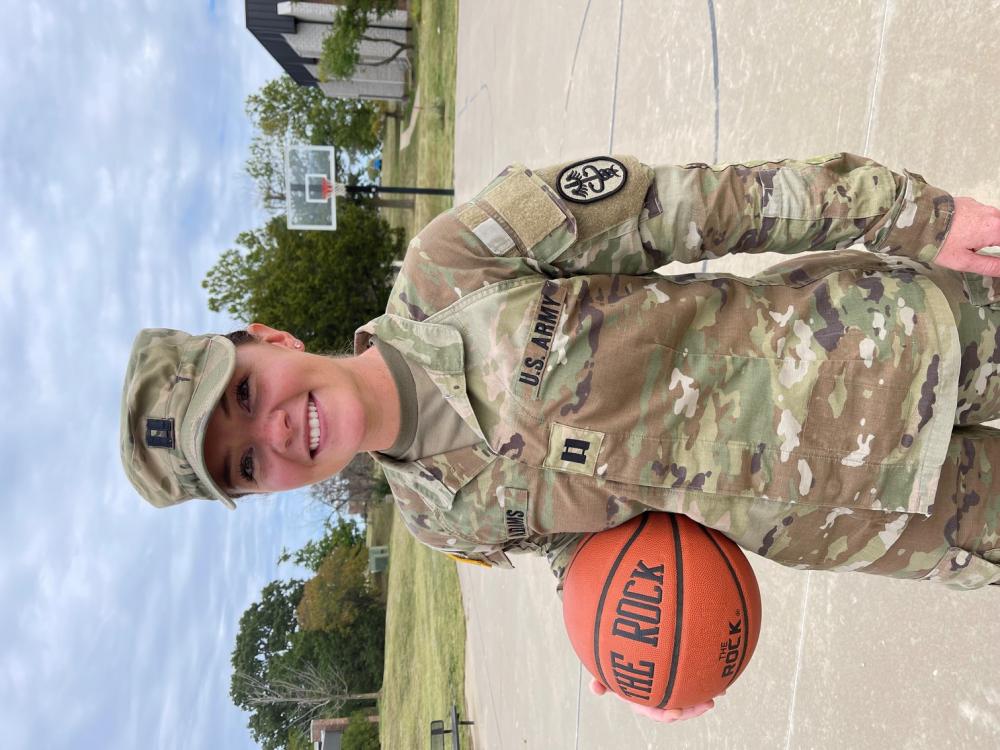DVIDS – News – Community Park coming soon to JBLM
JOINT BASE LEWIS-McCHORD, Wash. – On a cold and dreary day, a bright spot shown on the future site of a community park on Joint Base Lewis-McChord, marked with a sign unveiling ceremony by base leaders Nov. 28.
“You wouldn’t know it based on the weather right now, but there’s going to be summer here at some point in time,” said Lt. Gen. Xavier Brunson, I Corps commander. “There’s going to be spring, and it’s going to be a great place for folks to come to and experience a little bit of the view of Mount Rainier and just being in a community. I think that’s what keeps us all warm when it’s cold like this out here, is the knowledge that we live in one of the premier communities in our Army system.”
The graveled area across from the Lewis Main Commissary is the former site of the Army and Air Force Exchange Service minimall which contained various stores and vendors. With the opening of the recent AAFES Exchange facility expansion project on Lewis Main, the building, demolished in 2020, became surplus and had reached the end of its economic and sustainable life, according to the Directorate of Public Works.
“We appreciate the opportunity to partner with the installation for this green space to draw everything together to make synergy in this area and have a nice space for everyone to gather,” said Matt Beatty, JBLM Exchange general manager. “I understand how important it is to have a place for people to go and gather, so I’m really looking forward to seeing what this becomes in the future.”
As the large gravel lot is converted to a community park, plans include paths that will provide access to MWR recreational facilities like the Children’s Museum, Splash Park, bowling center and Memorial and Cowan stadiums.
“This is not a quick win, but a big win for the entirety of this installation,” said Col. Phil Lamb, JBLM commander. “We want to beautify it and add aesthetic appeal to this historic area, and for everyone that has been a part of it, thank you.”
The community park concept also includes potential partnering with AAFES and incorporating their food trucks and a picnic area for their patrons. DPW said the resulting project is planned for completion in June 2023.
| Date Taken: | 11.29.2022 |
| Date Posted: | 11.29.2022 15:19 |
| Story ID: | 434151 |
| Location: | TACOMA, WA, US |
| Web Views: | 3 |
| Downloads: | 0 |
PUBLIC DOMAIN
This work, Community Park coming soon to JBLM , by Edzel Butac, identified by DVIDS, must comply with the restrictions shown on https://www.dvidshub.net/about/copyright.


 Private Internet Access gives you unparalleled access to thousands
of next-gen servers in over 83 countries and each US state. Your
VPN experience will always be fast, smooth, and reliable.
Private Internet Access gives you unparalleled access to thousands
of next-gen servers in over 83 countries and each US state. Your
VPN experience will always be fast, smooth, and reliable.




![DVIDS – Images – METOC Hosts U.K. Hydrographic Office Head [Image 6 of 18] DVIDS – Images – METOC Hosts U.K. Hydrographic Office Head [Image 6 of 18]](https://101veterans.com/wp-content/uploads/2022/11/1669745393_1000w_q75.jpg.webp)


![DVIDS – Images – USCGC Hamilton conducts basic engineering casualty control exercises while operating in the Baltic Sea [Image 1 of 5] DVIDS – Images – USCGC Hamilton conducts basic engineering casualty control exercises while operating in the Baltic Sea [Image 1 of 5]](https://101veterans.com/wp-content/uploads/2022/11/1669738343_1000w_q75.jpg.webp)







